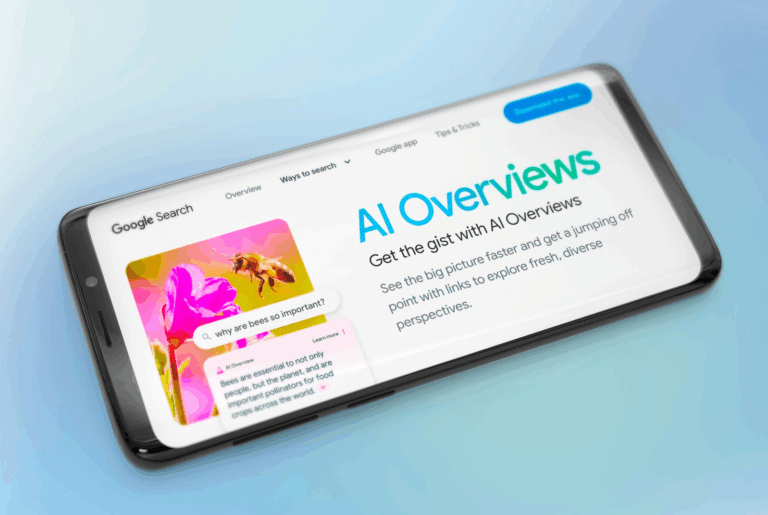Google Ads has evolved considerably in recent years, and Responsive Search Ads (RSAs) have become central to that transformation. By using machine learning to customise ad copy in real time, RSAs help advertisers improve engagement and reduce the need for manual A/B testing.
In this guide, we explore how to structure high-performing RSAs, the logic behind pinning, how to analyse performance, what ad strength really means, and examples of RSAs that deliver results.
Structuring Effective RSA Headlines and Descriptions
RSAs allow up to 15 headlines and four descriptions, providing advertisers with a powerful canvas to express value, relevance, and urgency. However, quantity alone is not enough – what matters is variety with purpose.
To consider a headline and description effective, it needs to contain keywords you’re targeting in the copy itself – that’s how Google knows your ad is highly relevant.
Best practices for RSA headlines and descriptions include:
- Avoid duplicating messages across headlines or descriptions.
- Include a mix of keyword-rich headlines, emotive value propositions, calls to action, and unique features.
- Descriptions should expand on your offering, include clear benefits, and support your CTAs.
- Include keywords you’re targeting in the ad copies.
Tip: By diversifying your messaging, you enable Google to test a broader set of combinations and surface the most relevant ad for each user.
RSA Pinning Strategy: When and Why to Use It
Pinning ensures that specific headlines or descriptions appear in a fixed position. While it may seem helpful for preserving control, pinning restricts the flexibility that makes RSAs effective.
Use pinning when:
- Legal disclaimers or compliance messages must appear consistently.
- Brand names or trust signals need to lead every ad.
- Specific offer messaging that needs to be prominently displayed.
However:
- Overusing pinning reduces the number of combinations Google can test.
- Pinning just one headline can cut testing potential by 75%.
- Pinning affects your ad strength, resulting in an “Excellent” ad dropping to “Poor”.
Tip: If you must pin, include multiple pinned variants in that position to allow for performance-based testing. A workaround is to use headline and description extensions to pin, to avoid being penalised in ad strengths.
Real-Time Performance Analysis and Iteration
The power of RSAs lies in their ability to improve over time – but only if performance is monitored and refined.
Key metrics to track for RSAs:
- Click-Through Rate (CTR) – Is the messaging driving engagement?
- Conversion Rate – Are those clicks turning into action?
- Cost per Conversion (CPA) – Is the ROI sustainable?
Tools to use to track RSAs:
- Ad Strength Performance Ratings (Excellent, Good, Average, and Low).
- Combinations Report – See which headline and description pairs drive results.
Tip: Regularly reviewing asset data allows you to phase out underperforming copy and test new variations grounded in real-world data.
Google Ad Strength Scoring Explained
Ad Strength is Google’s indicator of how well your RSA follows recommended best practices, measuring:
- Relevance of the content
- Diversity of headlines and descriptions
- Presence of keywords
What to keep in mind:
- Aim for a ‘Good’ or ‘Excellent’ rating to maximise visibility.
- Ad Strength is not a performance metric – ads with lower scores can still outperform in CTR or conversions.
- Use Ad Strength as a diagnostic tool, not a definitive measure of success.
Tip: Ads marked “Poor” might just need stronger variation or clearer keyword alignment, not a complete rewrite.
Industry Examples of Successful RSAs
At Pattern, we’ve worked with global brands to successfully implement high-performing RSAs. Aligned with strategic objectives, our approach focuses on continuous testing and optimisation, leveraging data insights and adapting to evolving search queries. Here are a few impactful examples.
Wine Industry
Ad copy that felt more relatable and conversational, such as “Hosting? We’ve Got Wines”, led to stronger engagement. This approach increased the click-through rate (CTR) to 4.6%, up from 3.15%, while the conversion rate (CVR) also improved to 5.56% compared to 4.64% previously.
Pin vs. Unpinned RSAs
For a targeted promotion, we tested pinned versus unpinned RSAs simultaneously. The pinned version featured four promotional headlines locked into position one, whereas the unpinned version used the exact same copy without headline pinning. Both ads had one promotional description pinned to the first description slot.
The unpinned variant delivered significantly stronger results across all key metrics:
- Conversion rate up by 38%
- CTR improved by 148%
- Cost per click reduced by 55%
- Revenue increased by 321%, with a 201% uplift in ROAS
These findings reinforce the value of allowing Google’s machine learning to test and optimise freely, rather than over-constraining ad structure.
Maximising Content and Ad Strength
Upon taking over an underperforming account, we refreshed the RSA assets to fully utilise Google’s capacity, expanding from eight headlines to the full 15 headlines and four descriptions. The previous ‘Average’ Ad Strength improved to ‘Excellent’ after including a broader range of keyword-relevant, high-impact headlines.
As a result:
- CPC decreased by 22%
- CTR increased by 9%
- CVR improved by 44%
This demonstrates how comprehensive asset creation not only enhances ad strength but also drives measurable improvements in performance and cost-efficiency.
Drive Campaign Performance with Pattern
Google’s Responsive Search Ads offer unmatched flexibility and learning potential when structured correctly. By crafting distinct assets, using pinning judiciously, and evaluating performance iteratively, advertisers can improve ad relevance, increase ROI, and streamline campaign management.
Well-constructed RSAs are not just smart – they’re strategic.
If you’re ready to get more from your Google Ads campaigns, our team can help you craft RSA strategies that convert. Get in touch with Pattern today and let’s improve your campaign performance – responsively.
FAQs
A Responsive Search Ad (RSA) is a Google Ads format that allows advertisers to input multiple headlines and descriptions. Google then uses machine learning to dynamically generate the most relevant ad combination based on the user’s search intent, device, and location.
You provide up to 15 headlines and four descriptions. Google’s algorithm tests different combinations and serves the most effective version for each search. Over time, it optimises performance by identifying which combinations drive the best engagement and conversions.
RSAs require you to input the ad copy and keywords, allowing for customised messaging. DSAs, in contrast, automatically generate headlines from your website content and are better suited for broad coverage without manual keyword and ad copy management.
Expanded Text Ads (ETAs) use a fixed format with static headlines and descriptions. RSAs are more flexible, allowing multiple inputs that Google combines dynamically. ETAs are no longer the default format and no longer available in Google Ads, while RSAs allow automation and optimisation at scale.
Include a mix of:
- Keyword-rich headlines
- Clear calls to action
- Unique features or benefits
- Conversational or emotive language, where relevant
Avoid repetition and ensure all combinations make sense individually.
Although Google allows up to three RSAs per ad group, the recommended best practice is to begin with one thoughtfully structured RSA that includes diverse, high-quality assets. This ensures meaningful performance testing and easier optimisation. In some cases, adding up to three RSAs can support broader experimentation, allowing Google’s machine learning to identify and prioritise the best-performing version.
Use the following tools and metrics:
- CTR to measure engagement
- Conversion Rate and CPA to track ROAS
- Ad Strength to assess asset quality (as a guide, not a KPI)
- Combinations Report to identify top-performing asset pairings
Continuously monitor and replace underperforming assets based on these insights.



